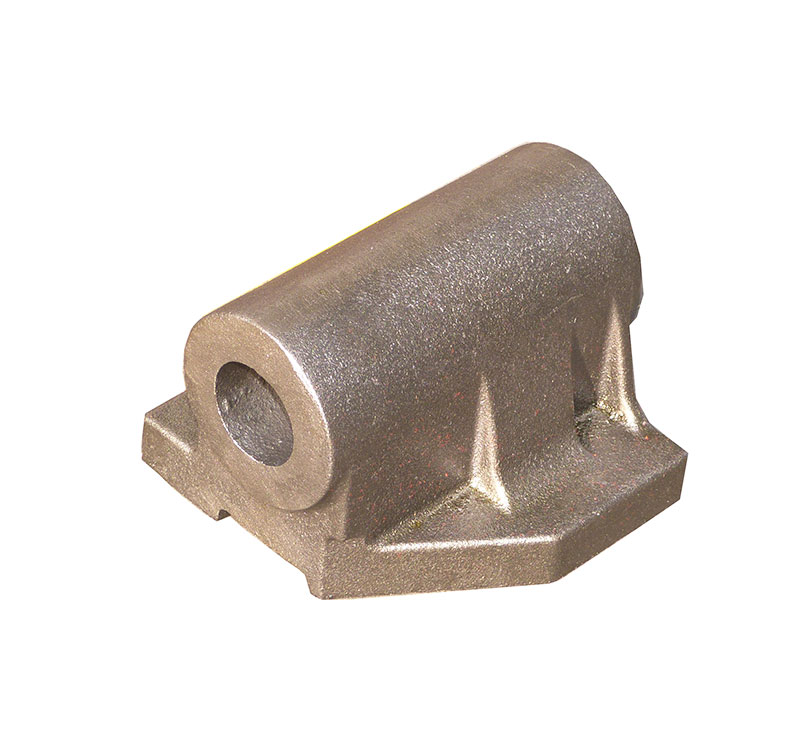+86 311 85258258
+86 311 85258258
Sep. 30, 2020
4. Shrinkage
Shrinkage porosity and shrinkage reduce the effective bearing area of the casting. The stress is concentrated at the defect during load. If the casting is a load-bearing part during work, it will easily break and fail, especially the shrinkage cavity that is not easy to detect. Shrinkage porosity is even more dangerous. Hidden dangers, so they are all defects that lead to scrap castings. Shrinkage porosity will cause leakage during hydraulic or water pressure tests of high-pressure vessel castings (cylinders, oil cylinders, etc.). The inner shrinkage holes exposed after machining of the castings will damage the surface quality of the processing.
(1) Reason for generation
OEM castings parts structure, smelting, craftsmanship, etc. can all cause shrinkage of castings. Taking the casting structure as an example, one is due to the excessively thick section of the casting, resulting in poor feeding and forming shrinkage holes; the other is that the sand core forming the casting hole due to the too-small diameter of the casting hole is heated by the high-temperature molten metal and remains in a high-temperature state for a long time. The solidification rate of the metal on the surface of the casting hole is improved. At the same time, the sand core provides a channel for gas or atmospheric pressure, resulting in shrinkage and loosening of the hole wall. Third, the concave corner radius of the casting is too small, which causes the sand to pass at the sharp corners. The heat capacity is reduced, and the precipitated gas can penetrate into the unsolidified molten metal, causing the casting to produce gas shrinkage holes.
(2) Countermeasures
In order to prevent these defects, the usual measures are to correctly design the feeder with good feeding effect, install external cooling iron, add cooling ribs, and increase the rigidity of the mold.

Green Sand Casting
5. Rough surface and sticky sand
With the development of casting technology, the requirements for the appearance quality of green sand casting are getting higher and higher. The rough surface and sticky sand greatly increase the workload of casting cleaning. Surface roughness is a unique defect of sand casting. It often occurs on the upper surface in the wet type, and in the dry type, where there is too little or no coating.
(1) Reason for generation
The mineral composition and chemical composition of the raw sand failed to meet the technological requirements; too low a quartz content in the sand would make its refractoriness and reusability reduced, which can lead to the poor surface quality of the casting. The phenomenon of sand sticking is related to the excessively high oxide content of the sand, because alkali metal oxides (Na2O, K2O) exist in feldspar and mica, and form low melting point compounds with quartz, resulting in chemical sticking of sand. Iron oxide and other oxides form compounds with low melting points, which reduces the refractoriness and causes sand sticking.
(2) Countermeasures
To prevent sand sticking, the following measures can be mainly taken:
1) Use finer raw sand to improve the fluidity of the molding sand and the compactness of the sand mold to reduce the pores on the surface of the sand mold;
2) Add the appropriate amount of anti-sticking sand additives to form a carbon film or sintered shell on the surface of the sand grains and between the sand grains to reduce the oxidation of the metal liquid surface and the wetting and penetration of the sand surface;
3) Spray the paint on the surface of the sand mold that has high refractoriness, is not easy to be wetted by the molten metal, and does not react chemically with the surface oxide of the liquid metal, so as to reduce the erosion and penetration of the surface of the sand mold by the metal liquid.
6. crack
(1) Reason for generation
The causes of cracks in castings are very complicated. There are problems with casting materials, as well as casting process and modeling materials.
(2) Countermeasures
In addition to improving the casting process and casting structure, other measures to prevent casting cracks can reduce the thermal expansion of the sand mold (core) and improve the regressivity of the mold (core) sand: adding wood chips or organic binders to the molding sand, using a smaller particle size The scattered raw sand is helpful to prevent cracks in the casting.